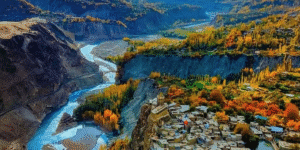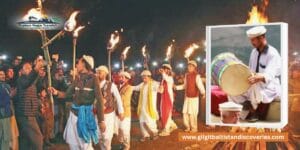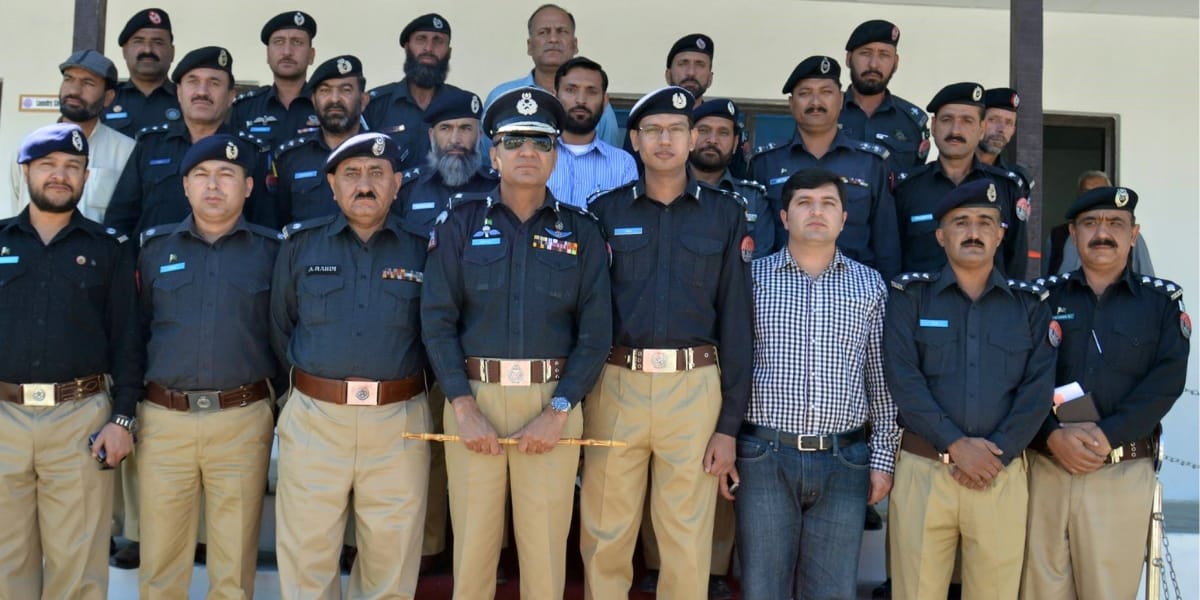Gilgit‑Baltistan turns into a golden canvas every autumn. October is the sweet spot crisp days, colourful orchards, reflective alpine lakes and fewer crowds. This complete guide explains where to go (Skardu, Hunza, Nagar, Ghizer, Khaplu), how the weather behaves, what to pack, sample itineraries and photography tips to make your autumn trip effortless and unforgettable.
Table of Contents
ToggleQuick Overview: When & Why Visit in October
Best months: Mid‑September to early November. October is when most valleys show their brightest colours.
Why October: Peak foliage across Hunza and Nagar, early golden meadows in Baltistan, clear skies for photography and fewer tourists than summer.
What to Expect: Weather & Conditions
October brings stable, crisp weather in lower valleys and rapidly falling temperatures at night. Daytime in valley towns (Skardu, Karimabad‑Hunza) typically ranges between 8–18°C, while nights can fall near or below freezing — especially at higher altitudes and plateaus like Deosai.
Regional Summary
- Skardu / Baltistan: Early October shows autumn colours; higher altitudes can get early snow later in the month.
- Hunza & Nagar: Orchards change colour from late Sep → mid‑Oct; Attabad, Eagle’s Nest and forts are classic photo spots.
- Ghizer (Phander, Gupis): Mirror lakes reflect autumn hues in late October.
- Khaplu / Ghanche: Ideal early October for valley slopes and Khaplu Palace views.
Roads & Accessibility
Roads are generally open in October but can be affected by landslides or unexpected snowfall at high passes. Domestic flights (Skardu/Gilgit) are a more reliable option when available.
Health & Safety
Altitude sickness is possible — acclimatise for 24–48 hours in main towns before going higher. Carry basic first aid and warm layers. Use local guides for remote treks.
Regions & Best Spots for Autumn Colours
Skardu & Baltistan
Skardu town is the gateway to Baltistan the valley orchards, Kachura Lakes, Shangrila, Skardu Fort and the Deosai Plains make it a top autumn destination. The contrast of golden meadows against snow‑tipped Karakoram peaks is unforgettable.
Skardu & Baltistan – Where Mountains Speak in Silence
Skardu is not a city you just visit; it’s a place that quietly stays with you. Sitting deep in Gilgit-Baltistan, it feels like the mountains here are guardians of old stories. The Indus River runs through the valley, calm at times, fierce at others, shaping the land and the people alike.
Baltistan, often called Little Tibet, carries its own rhythm. Villages rest under apricot and walnut trees, wooden houses built with patience and care, and every corner opens to a view that feels almost unreal. It’s not about the rush of tourism — life here moves slowly, tied to seasons, farming, and tradition.
When autumn arrives, everything softens. Golden leaves scatter across the valleys, Khaplu and Shigar turn into living paintings, and Skardu Lake mirrors skies that change from bright blue to a quiet dusk glow. The mountains don’t just look beautiful; they make you pause, breathe, and remember how small yet complete a moment can feel.
Baltistan is also a gateway — from Skardu, the road takes you towards some of the world’s highest peaks: K2, Masherbrum, and Gasherbrum. But beyond the expeditions and treks, there is warmth in the way locals share tea, bread, and stories with strangers who turn into friends.
Skardu and Baltistan aren’t about ticking boxes on a travel list. They’re about finding silence, color, and community in the heart of the Karakoram. It’s a place that doesn’t shout for attention — it simply waits, and if you’re lucky enough to arrive in October, you’ll see why travelers often call autumn here the most magical season of all.
Hunza Valley
Hunza’s orchards (apricot, apple) and iconic viewpoints Altit & Baltit Forts, Eagle’s Nest and Attabad Lake are spectacular in October. Early mornings deliver soft mist and dramatic colours.
Hunza has a way of making travelers feel at home, even if it’s their first time stepping into the valley. The mountains stand tall and quiet, while the small villages spread across the slopes as if they were placed there with care. Life here follows the seasons, and autumn might just be the most beautiful of them all.
In October, the orchards turn golden. Apricot and apple trees glow in soft sunlight, their leaves scattering on narrow paths where children walk to school and farmers return from the fields. The air carries a gentle chill, but it is never harsh. Instead, it feels fresh, like a reminder that winter is on its way.
The forts of Hunza, Baltit and Altit, overlook the valley with a calm presence. From their balconies you can see layers of colors, from the yellow of trees to the white of snow on Rakaposhi. Attabad Lake sits like a mirror, reflecting both sky and mountain, and in autumn the water looks even deeper against the backdrop of changing leaves.
Hunza is not just about scenery. It is about mornings that start with a cup of local apricot tea, evenings that end with stories shared around a fire, and the quiet rhythm of a community that has lived in harmony with nature for centuries. For travelers, it offers a balance of adventure and stillness. For photographers, it offers light that feels almost magical.
October is when Hunza feels most alive in color and yet most peaceful in spirit. It is not just a valley to pass through. It is a place that makes you pause, take in the view, and remember it long after you’ve left.
Nagar & Hopper
Hopper Valley, Rakaposhi view points and Minapin show intense autumn hues framing giant granite peaks. Excellent for landscape and contrast photography.
Nagar Valley often feels like a place frozen in time, where raw beauty and calmness blend into a perfect escape. Located just across the Hunza River, it shares the same stunning views of mighty peaks but carries its own unique charm. Unlike its famous neighbor Hunza, Nagar is quieter, less crowded, and still holds on to an untouched, authentic vibe.
The valley is surrounded by some of the world’s highest mountains, including Rakaposhi and Diran Peak. When the sun touches their snow-capped tops, the whole valley glows in golden shades, creating a view travelers never forget. Nagar is also home to glaciers like Hoper Glacier, which stretch endlessly and offer a dramatic landscape for those who love adventure and photography.
What makes Nagar even more special is its people. Life here moves at a slow pace, filled with traditions, warm hospitality, and stories passed down from generations. Farmers still work their fields, children play along the riverbanks, and elders gather to share tea while watching the mountains.
For travelers, Nagar is a perfect mix of peace and thrill. You can hike to breathtaking viewpoints, wander through fruit orchards, or simply sit by the river and enjoy the silence. It is less commercial, which means you experience the valley in its purest form.
Nagar might not be as widely known as Hunza, but for those who visit, it becomes unforgettable. It is one of those rare places where nature and culture live in perfect balance, waiting to be discovered.
Ghizer (Phander & Gupis)
Phander Lake’s calm waters make mirror reflections of autumn trees — a quieter alternative to the busier Hunza and Skardu circuits.
Ghizer Valley feels like the peaceful heart of Gilgit-Baltistan. It doesn’t try to impress you with big resorts or crowds. Instead, it wins you over with calm mornings, quiet lakes, and simple smiles from the people who live there. The valley stretches from Gupis to Phander, each turn revealing another shade of blue, green, and gold.
Gupis is where the beauty of Ghizer begins. The road runs beside the river, winding through villages surrounded by poplar trees and soft golden fields. The water is so clear that even the pebbles beneath it sparkle in the sunlight. Life here is slow and warm. Children wave as you pass by, farmers tend to their land, and the air feels clean and alive.
Further ahead lies Phander, a small valley that looks like a painting. Its turquoise lake reflects the sky and mountains so perfectly that it’s hard to tell where one ends and the other begins. Autumn adds a magical glow — trees around the lake turn orange and yellow, and the entire valley looks like it’s wrapped in golden light.
For those who seek peace more than adventure, Ghizer is that quiet corner where time doesn’t rush. You can sit by the lake, listen to the wind, or take a walk through the fields. Every path feels like it leads to a new kind of calm.
The best part of Ghizer is its honesty. There’s no noise, no pressure to move fast, and no need for filters — just raw beauty, soft air, and the gentle rhythm of nature. Whether it’s Gupis or Phander, you leave feeling lighter, as if the valley borrowed your worries and never gave them back.
Khaplu & Ghanche
Khaplu Palace, the villages around it and the slopes toward the Haldi Cones offer intimate, less‑crowded autumn scenes great for cultural and village photography.
Khaplu sits quietly at the edge of Baltistan, surrounded by tall mountains and the gentle flow of the Shyok River. It is one of those rare places where you can feel both peace and awe at the same time. The landscape is vast and open, filled with color and silence, and the air feels cleaner than anywhere else.
The first thing that catches your eye in Khaplu is its simplicity. Old wooden houses, narrow paths lined with poplar trees, and children walking to school with laughter that echoes through the valley. The historic Khaplu Palace stands with quiet grace, a reminder of the region’s royal past, now welcoming travelers who come to see how tradition and nature live side by side.
Ghanche, often called the “Land of Glaciers,” stretches beyond Khaplu, reaching toward the mighty Karakoram peaks. Here, the mountains rise higher, the air gets thinner, and the sense of adventure grows stronger. Autumn in Ghanche paints the valleys in deep golds and burnt oranges, while the river stays a calm silver blue.
Unlike popular destinations, Khaplu and Ghanche haven’t changed much. People still live close to the land, growing their food, sharing tea with travelers, and watching sunsets that turn the peaks crimson. You won’t find much noise or rush here — just quiet roads, honest smiles, and the feeling that you’ve stepped into a world that hasn’t lost its soul.
When autumn arrives, this part of Baltistan turns almost dreamlike. The mix of color, mountain light, and stillness makes Khaplu and Ghanche unforgettable. It’s a place to slow down, breathe deeply, and realize that sometimes, the best journeys are the quiet ones.
Top Activities for Autumn Visitors
- Scenic drives (Karakoram Highway stretches, Skardu circuits)
- Jeep safaris to Deosai (check status), day hikes and valley walks
- Photography: dawn/dusk golden hour, lake reflections, orchards
- Cultural experiences: orchard harvest, local food (apricots, walnuts), handicrafts
- Wildlife viewing: in some areas you may spot migratory birds or local fauna
What to Pack (Autumn Essentials)
- Layered clothing: thermal base layers, warm mid layer, wind/rain jacket
- Hiking boots, warm socks, hat, gloves
- Sunglasses, sunscreen, lip balm
- Camera gear: tripod, extra batteries (cold drains battery faster), ND/UV filters
- Basic medicines, water purification, snacks
Sample 6‑Day Autumn Itinerary (Skardu → Khaplu → Hunza → Nagar)
- Day 1: Arrive Skardu — explore Skardu Fort, bazaar.
- Day 2: Kachura Lakes & Shangrila; evening at lakeside.
- Day 3: Deosai daytrip (if open) or Khaplu circuit.
- Day 4: Drive to Hunza — stop at scenic viewpoints.
- Day 5: Hunza highlights (Altit, Baltit, Attabad).
- Day 6: Hopper / Nagar viewpoints; return or continue to Ghizer.
Photography Tips for October
- Shoot in early morning & late afternoon for soft golden light.
- Use a polariser to reduce glare on lakes and increase saturation of foliage.
- Bracket exposures for scenes with high dynamic range (snow + shadowed valleys).
- Protect gear from dust, moisture and rapid temperature changes.
Pros & Cons: Visiting in Autumn
Pros: Stunning colours, fewer tourists, excellent photo light and pleasant daytime temperatures.
Cons: Cold nights, possible early snow at high passes, limited services in very remote lodges late in season.
Conclusion
Autumn in Gilgit-Baltistan is not just a season, it’s a feeling that stays with you long after you’ve left. From the golden trees of Hunza to the quiet lakes of Ghizer, from the glowing peaks of Nagar to the calm streets of Khaplu and Skardu, every valley tells its own story through color, light, and silence.
October brings a soft kind of magic to the north. The mountains look warmer, the air feels lighter, and the rhythm of life slows down. It’s the perfect time to travel, not for adventure alone, but to reconnect with nature and yourself.
Gilgit-Baltistan in autumn doesn’t ask for attention; it invites you gently. You just have to show up, take a deep breath, and let the valleys do the rest.
FAQs
- Is Deosai open in October?
- Deosai’s accessibility depends on snowfall. Early to mid‑October is often accessible; late October may see closures. Always check with local operators before planning.
- Will roads close because of snow?
- Higher mountain passes can close unexpectedly. Keep flexible itineraries and allow buffer days. Consider domestic flights to Skardu/Gilgit where possible.
- How cold does it get at night?
- Nights in valley towns can drop near freezing; high altitude areas are much colder. Pack warm sleeping layers and insulated clothing.
- Do I need permits?
- Main tourist valleys typically do not require special permits. However, restricted border areas or certain treks may need NOCs — check with local authorities or trusted tour operators.







